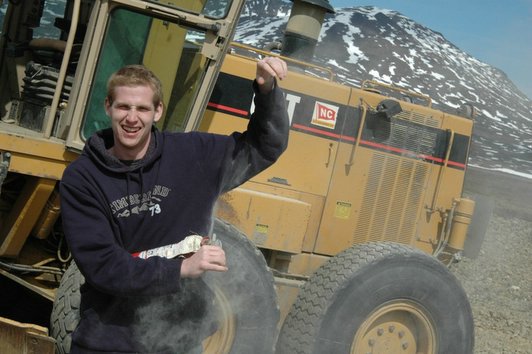
I don't know how many Crispanatics are still out there, but wherever you are, I have a treat for you. In late 2005, shortly after I arrived in the Philippines, I saw some kind of TV news lifestyle segment on Tiendesitas, the upscale Tiangge at the corner of C-5 and Ortigas Avenue, and decided to check it out. I will always remember that trip for two reasons. First, it was the day that the geography of the lower part of Quezon City clicked in my head. While sitting in a taxi headed toward Rosario, I noticed the road that takes you past Green Meadows and realized I knew how to get back to Katipunan from there. Later that day, foolishly, I decided to put my knowledge to the test, and walked from Tiendesitas to Green Meadows, then across to White Plains, past the Mormon temple, past the row of fertilizer and garden supply shops, up to Santolan, past Blue Ridge and now on Katipunan Extension, past Dannylicious and Countryside (oh the barbecue I missed that day!) over the flyover and finally into Loyola Heights and home. The trip took almost two hours but felt like seven. I realized by the time I hit the Mormon temple that I had set myself up for a miserable afternoon, but once I had committed to the trek, I refused to give up, even if it meant tripling my agony. It wasn't the heat or the exhaust fumes that did me in, but the fact that many sections of the walk I just described were woefully barren. There were no other pedestrians, just cars zipping past and taxis taunting me with their be-bopping horns. Often, I was just walking alongside high wall of a closed subdivision or an empty field or the air above the Marikina Valley. That view is actually quite splendid, but by the time I got there I was shuffling forward on little more than spite and didn't bother admiring the city.
Luckily, when I got home, I had something special to look at. A beat-up Crispa photo album from the late Seventies that I bought from an antique shop at Tiendesitas, which is the second reason I won't forget that afternoon. At the time, I don't think I really even knew who the Crispa Redmanizers were or why they mattered. I just bought the album because it looked like an important piece of history. Given how sparse the photo and especially video record is of the early PBA, I do consider this album to be a pretty meaningful find. Even before I could recognize the players in it, before Toyota #7 meant something to me, I could look at this and feel the immense passion behind Philippine basketball, and I can still look at some of these photos and feel inspired. I'm going to do my best to scan them all over the next few months and post them here for the world to see, if anyone ever finds my blog.
I'm not 100 percent sure what year this album is from. I could find out with a little more digging, but I bet some commenters will provide important clues. One possibly telling fact is that Freddie Hubalde is prominently featured in it. That leads me to believe that it's either a 1977 album, since Hubalde won the MVP that season, or it's a personal album made for Hubalde or one of his fans or someone in his family. As you can see, the very first photo in the whole album is a really nice portrait of Freddie, the only such headshot in the entire album. Enjoy reliving what many Filipinos consider to be the PBA's glory days.




